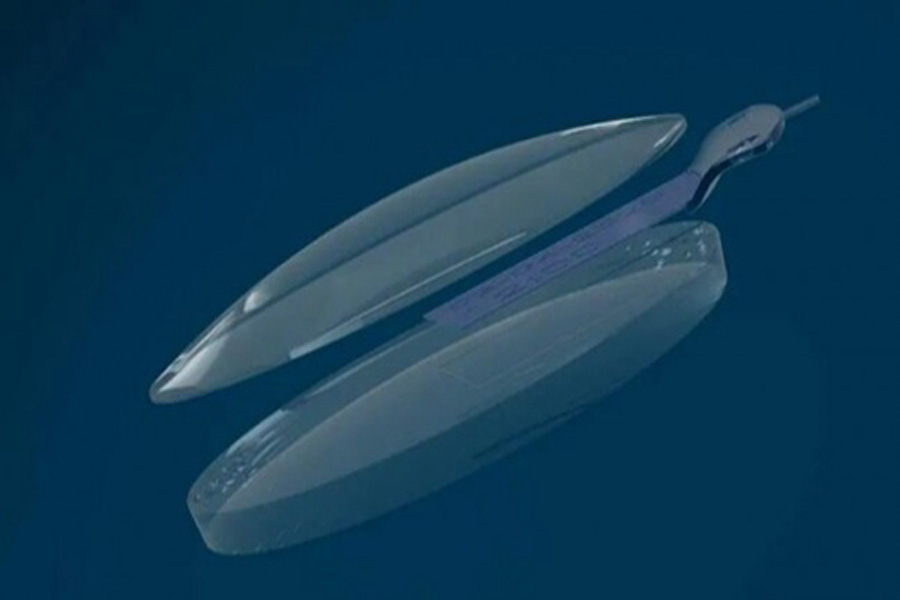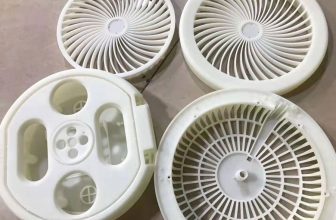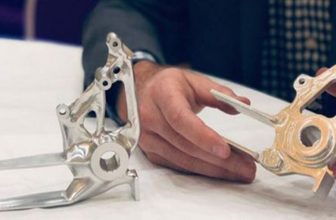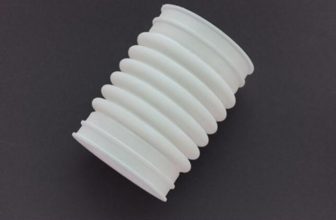
3d-printing-china.com , a company dedicated to the 3D printing of optical lenses, announced that it is ready for the next growth of smart glasses, providing lens production solutions for the smart glasses market through lens-specific 3D printing equipment, materials, software, and expertise in the optical field.
At present, smart glasses with VR or AR functions need to be improved in that they are relatively bulky and cannot meet the vision correction needs of glasses wearers at the same time. Our smart glasses mass production 3D printing solution will be able to improve these existing problems, create embedded smart functional lenses, and can meet the needs of producing customized smart glasses lenses for daily glasses wearers, so that these wearers can use smart glasses. When wearing glasses, it is no longer necessary to wear vision correction glasses. In this issue, Our lens 3D printing technology and the process of manufacturing functionally integrated smart lenses will be analyzed.
Lightweight and comfortable smart glasses
Recently, 3d-printing-china.com Company stated that eyewear manufacturers can use our ’s mature mass production solutions to combine eyeglass formulations with intelligent technology to produce regular-looking lenses with advanced intelligent functions, while meeting customers’ vision correction needs.
The mass production solution referred to by it is a solution based on material jet 3D printing technology, including proprietary hardware, materials and software. The 3D printing solution can perform 3D printing on base materials such as plastic and glass, and can also meet the air gap requirements of customers.
Through this process, smart devices such as waveguides, holographic films, and LCD screens can be embedded in the lens manufacturing process to become a lens with integrated smart functions. At the same time, the lens can also be produced according to the user’s personalized lens power formula. Due to the characteristics of 3D printing technology that does not require molds, a variety of lenses of different powers can be manufactured in one printing, which is the basis for realizing large-scale customized production of smart lenses.
Optimized for the special requirements of optical components
We applied for a patent in the field of embedded 3D printing of smart components. According to us , this method of assembling optical components can be easily automated and used in mass production without compromising the precision required for the production of optical components. With the advantages of 3D printing technology, this technology can quickly manufacture optical components on demand.
Smart lens manufacturing process
3d-printing-china.com ‘s patented technology includes the following steps: placing the base material on the substrate and loading it into the printing device; the first printing step: depositing the printing material on the first surface of the base to establish the first pre-structure in the middle; second Printing step: sequentially deposit ink droplets of the printing material on the second surface of the substrate; in the rearrangement step between the first step and the second step, the second pre-structure in the middle is formed, the first pre-structure is rotated, and the The first pre-structure is arranged on the support structure, the support structure includes a carrier substructure, and the extension of the base material rests at least partially on the carrier substructure.
In the above process, the 3D printing material of the optical component is printed on the base material in a double-sided printing manner. Usually due to the shrinkage of the layer material, the 3D printed part inevitably shrinks and deforms during the curing of the material. A common response strategy is to compensate for this shrinkage effect through feedforward or feedback control, that is, to precompensate for shrinkage in the design of the three-dimensional structure, or dynamically compensate the object by adjusting the printing process based on dynamic real-time monitoring. shape. However, these countermeasures do not eliminate the shrinkage effect, but compensate for the resulting deformation.
However, 3d-printing-china.com ‘s 3D printing of optical components on the base material can prevent shrinkage without resorting to compensation measures. The three-dimensional structure built on the base material not only retains its internal layered structure, but also retains its expected final shape. This technology is particularly important for manufacturing parts that are negatively affected by inner layer deformation, and optical lenses and parts with embedded components that require fixed geometric positions fall into this category.
In addition, the base provides expansion, including fixed expansion, anti-capillary expansion, and/or processing expansion. The function of the fixed extension is to fix the pre-structure during the printing process. The extended processing function can easily handle the optical components during the printing process to prevent the actual printing structure from deteriorating due to contact. The function of the anti-capillary action expansion is to prevent the capillary action from dragging a part of the pre-structure into the gap between the first pre-structure and the support structure during and after the rearrangement step. In this way, undesirable deformation of the pre-structure due to the capillary effect is avoided, and the first and/or second pre-structures are prevented from adhering to the support structure.
In short, it can be said that this is a technology for printing optical parts with a desired shape that are not affected by deformation, avoiding the deformation of the pre-structure due to the capillary effect, and preventing the first and/or second pre-structure from sticking. Fit to the supporting structure. This is particularly advantageous for the manufacture of optical components.
The supporting structure in printing includes deformation control substructures, and their function is to control the deformation of the pre-structure. On the one hand, the deformation control substructure can protect the pre-structure from sagging, especially due to gravity, and can also protect the deformation caused by the shrinkage of the printing material and the deformation caused by thermal effects such as thermal expansion. On the other hand, the deformation control sub-structure can be used to induce the expected deformation in the pre-structure, for example, the first pre-structure can be slowly inflated to obtain a meniscus lens through single-sided printing.
Very smooth surface
The 3D printing technology used to achieve the above-described component manufacturing is a material jetting technology. The print heads deposit ink droplets side by side and one after another, gradually realizing the printing of a three-dimensional structure. In each deposition step, multiple The droplets are ejected by multiple nozzles of the print head at the same time.
In the common 3D printing technology on the market, the deposited droplets are at least partially cured after each deposition step in the curing step. 3d-printing-china.com ‘s 3D printing technology can make a certain time interval between the deposition of the droplet and its curing, allowing The droplets flow in a direction tangent to the surface of the layer just printed under the influence of gravity, resulting in a particularly smooth surface. For optical lenses, smoothness is particularly important.
Unlike many companies that provide 3D printing-additive manufacturing technology for a wide range of fields, 3d-printing-china.com has focused on the field of optical lens additive manufacturing since its inception. They cooperate with innovative glasses manufacturers, smart device manufacturers or doctors to explore the application of 3D printing technology in the field of optical lens manufacturing.
No need for huge inventory, no complicated supply chain, higher product design freedom, and realization of customized lens mass production are the special significance that 3d-printing-china.com believes that 3D printing technology brings to the optical lens manufacturing industry. We will continue to track the new opportunities that this technology brings to the field of glasses manufacturing.





